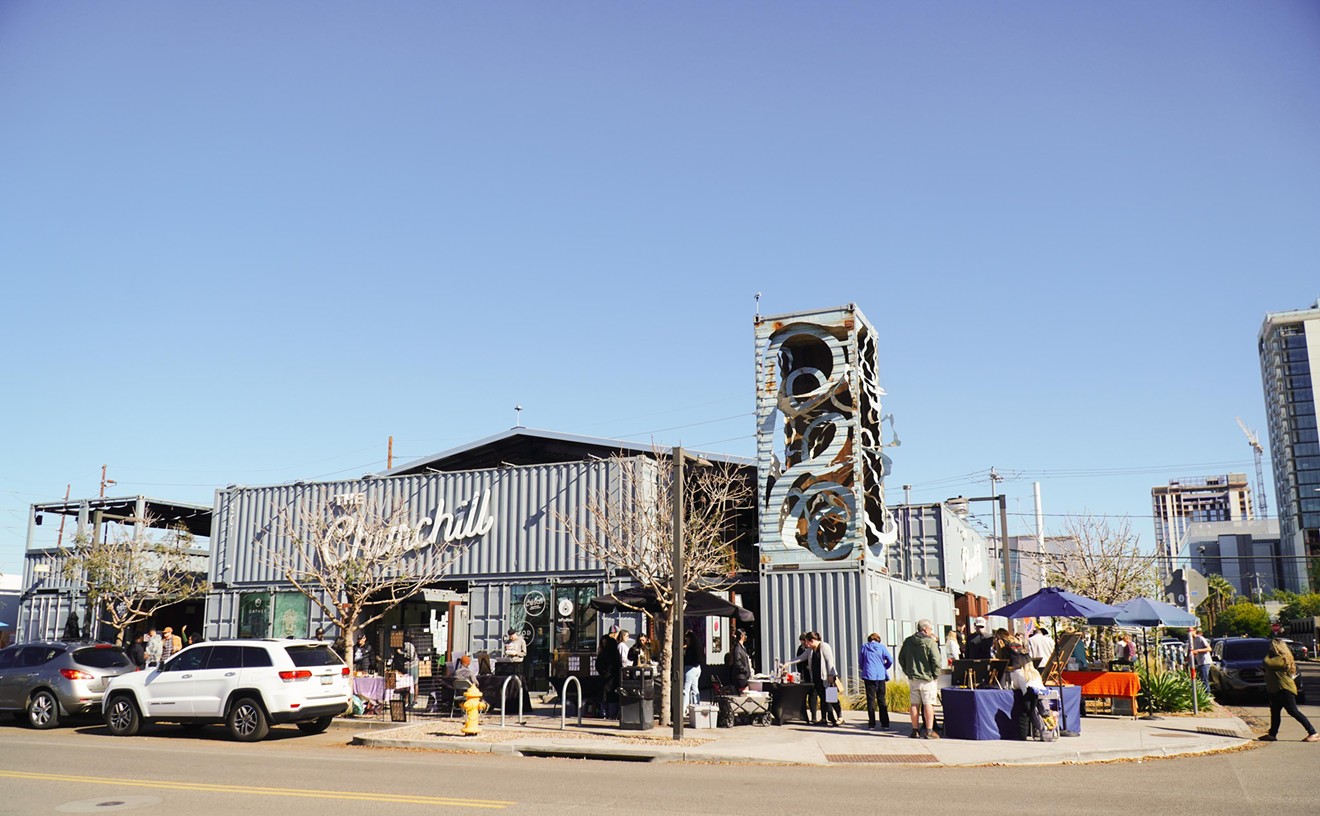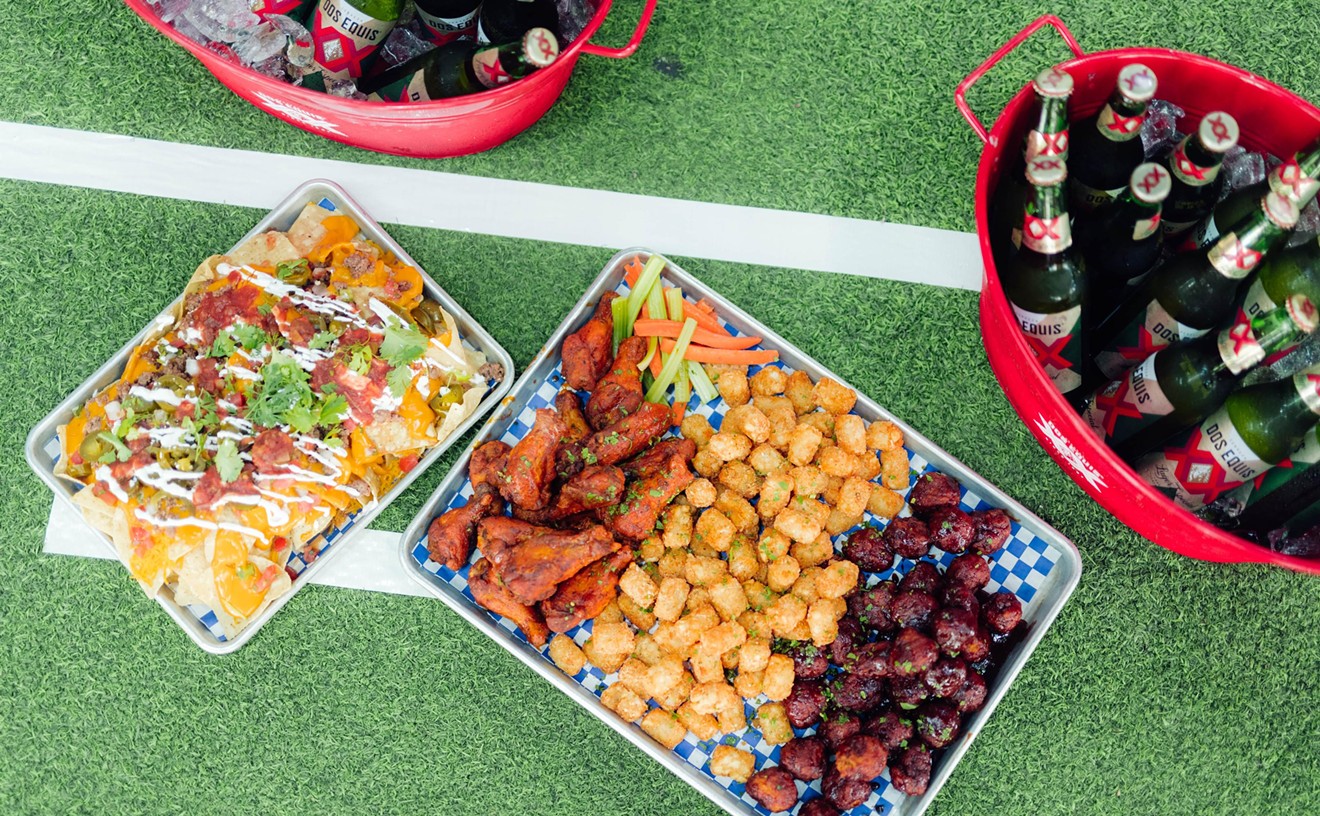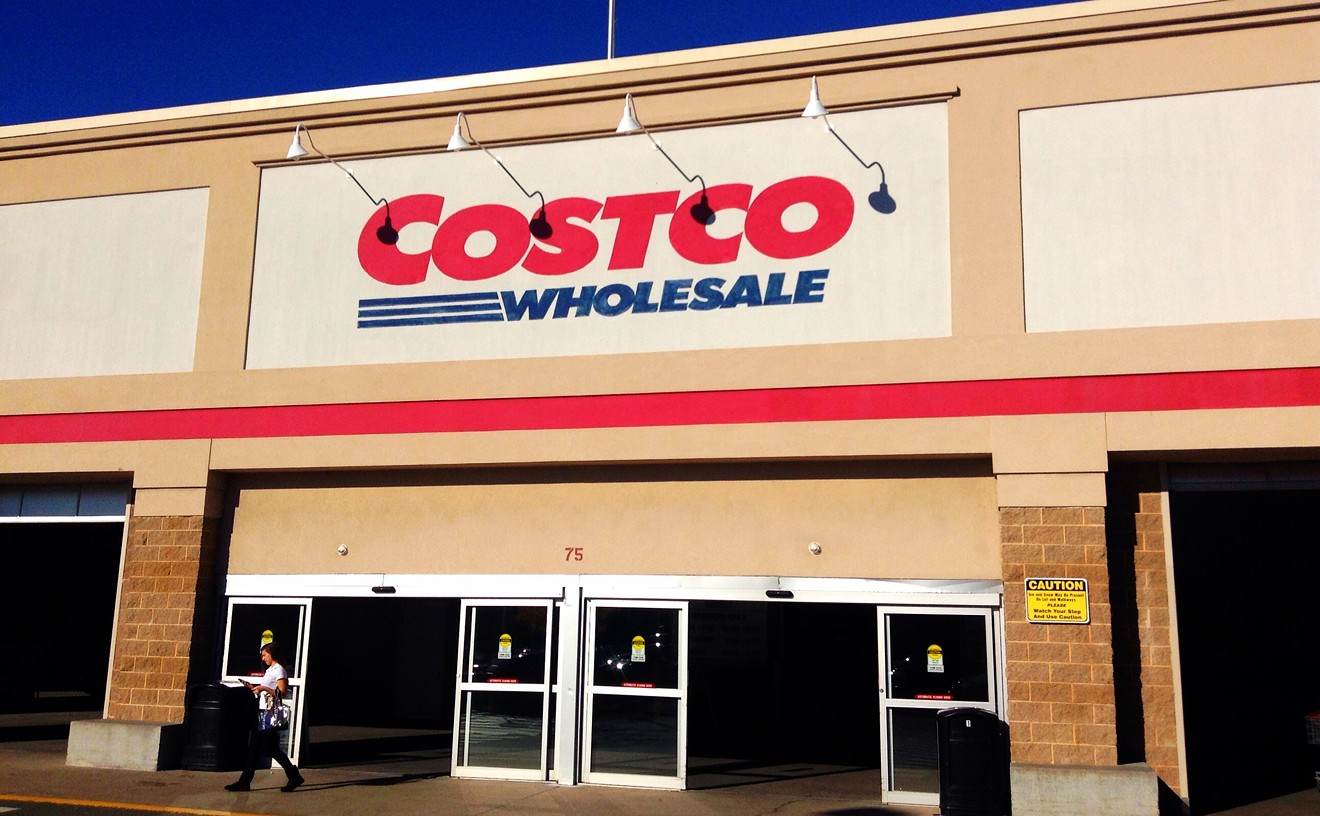Molecular gastronomy (not the after-effect of eating too many black bean, spicy sausage and cheese nachos) is a scientific discipline that studies the physical and chemical processes that occur while cooking. In this seven-part series, we're using our love of food and Carl Sagan to create molecular masterpieces of deliciousness as newly indoctrinated chef-chemists, or "chemefs." Pray for us.
The Kit: Straight from the virtual store for nerds, we ordered our molecular gastronomy starter kit from thinkgeek.com. Given its $70 price tag, we were hoping it would come with a chimp in a lab coat. No luck. It did come in a fancy tin box, complete with packets of chemicals, a syringe, pipettes, measuring spoons, silicon tubes, a slotted spoon, and brochure that looked like it was designed by the Euro-hipsters at IKEA. The cover of the brochure read, "Easily get started with a creative and natural way of cooking!" Creative? We're creative! Natural? Natural's good! Easy? We love easy!
Excitedly, we turned to the first page -- kit accoutrements in hand, safety goggles on, ink pens in pocket, we were ready to make "chemefstry." We immediately hit some snags but went back to it with the determination only Chow Bella bloggers have (insert joke here). Easy? Easy our science teacher's ass. That does it. We're writing a letter to Cuisine Innovation, creators of our molecular cooking set and brochure:
Dear Frenchies,
First of all, since you took the time for an English translation in the brochure, how about a section for the three countries in the world that gave the collective finger to the metric system? To us, 500 ml. of "red berry juice," whatever the hell that is, could be a spit in the eye or run through the sprinkler. Help us out a little, huh?
Secondly, if you're going to force us to use your invasive system of measurements, kindly mark your measuring spoons, or cuilléres, as such. Instead of "smidgen," "pinch," and "dash," how about marking your spoons in grams? This would save us the trouble of going to the confusing volume-weight conversion table on the last page of the brochure only to discover that a "smidgen" of agar-agar is 0.1 grams but a smidgen of sodium bicarbonate is 0.3 grams.
Thirdly, regarding said cutesy conversion table, you may want to mention earlier in the brochure that we'd be utilizing it in the recipes -- like in a big, yellow, glowing, cheese-sniffing starburst on the front page. That would prevent us from running frantically to our computers and looking up gram-to-teaspoon conversions, wondering why the hell we just couldn't have stuck to restaurant reviews and wine tastings.
Lastly, save the fancy language for your cuisine and call a "bin" what it really is: A garbage gorge.
You're welcome -- for everything. Phoenix New Times, Chow Bella
There. Now we feel better. Tune in next week, future chemefs and curiosos, when we make our first molecular gastronomy recipe, Caviar of Red Fruit.










